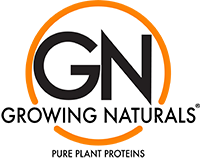Did you know plant-based foods are a major source of heavy metal exposure?? Despite great unawareness, people primarily on plant-based diets (including vegans, vegetarians and even flexitarians) are likely to consume more heavy metals than people consuming primarily animal-based food products. A published study from Slovak Medical University in Czech Republic (2006), found in a group of healthy adults that the vegetarian group had significantly higher blood cadmium levels than those who were non-vegetarian(1). Additionally, the vegan sub-group within the vegetarians had even higher blood levels of cadmium. The major sources of cadmium in the study were reported to be from whole grain products, pulses and oils seeds. Despite these major levels in the blood, the authors note that vegetarians’ significantly higher blood levels of antioxidants are likely to offset any negative or harmful effects of greater cadmium intake from plant food. In general, a growing body of research continues to indicate that the benefits of a plant-based diet seem to far outweigh any negative consequences. These findings are not surprising considering the major source of exposure for cadmium is terrestrial foods, those grown directly in the soil (2). However, the World Health Organization (WHO) and the Agency for Toxic Substances and Disease Registry (ATSDR) agree that only 2-6% of cadmium ingested is taken into the body. This is a significantly smaller absorption than when cadmium is inhaled (30-64%). This is probably because
various factors impact the absorption and retention of consumed heavy metals in the body. The body also has natural
ways to "detox" itself which can further alleviate any negative effects. Here is a list of heavy metals in common food items:
| Max. Amounts of Lead, Arsenic, Cadmium found in commonly consumed Foods* |
|
Lead |
Arsenic |
Cadmium |
| Spinach, fresh, boiled (180g)1 cup |
11.5 mcg |
7.7 mcg |
94.3 mcg |
| Cucumber, raw (52g) ½ cup |
1.6 mcg |
1.3 mcg |
0.4 mcg |
| Strawberries, raw (72g) ½ cup |
1.2 mcg |
0.8 mcg |
4.7 mcg |
| Avocado, raw (75g) ½ cup |
3.0 mcg |
2.8 mcg |
8.0 mcg |
| Collards, fresh, boiled (190g) 1 cup |
25.8 mcg |
2.7 mcg |
23.2 mcg |
| Asparagus, fresh, boiled (180g) 1 cup |
2.5 mcg |
-- |
25.0 mcg |
| Iceberg lettuce, raw (72g) 1 cup |
0.4 mcg |
1.0 mcg |
23.3 mcg |
| White potato baked w/ skin (138g) 1 cup |
2.8 mcg |
5.8 mcg |
15.5 mcg |
| Broccoli, fresh, boiled (156g) 1 cup |
2.2 mcg |
-- |
4.7 mcg |
*Based on Total Diet Study Statistics on Element Results. 2007, Center for Food Safety and Applied Nutrition, US Food and Drug Adminstration.
References: 1. Krajcovicova et al. Cadmium blood concentrations in relation to nutrition. Cent Eur J Publ Health. 2006; 14(3): 126-129 2. "Cadmium exposure and human health." International Cadmium Association. Available at:
http://www.cadmium.org/pg_n.php?id_menu=5

